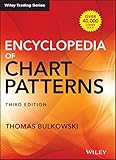
Sentiment: Neutral
Direction: Reversal or Continuation
What Is The Rectangle Chart Pattern?
A Rectangle is a sideways channel where price action is confined within a trading range.
Price action fills out the rectangle back and forth with several touches of resistance.
Rectangles can form at the top or bottom of a trend, or mid-trend as a continuation pattern.
How To Identify The Rectangle Pattern?
The price action must repeatedly encounter resistance and support trendlines that are almost parallel to one another. This creates some sort of breathing space for the ongoing trend.
What Is The Psychology Behind The Rectangle Pattern?
The Rectangle pattern is a technical analysis chart pattern that occurs when the price of an asset moves within a trading range.
The pattern is characterized by two parallel horizontal trendlines, with the upper trendline representing resistance and the lower trendline representing support.
The pattern can take weeks or even months to form and can occur in both bullish and bearish markets.
Traders interpret the pattern as a sign of a potential continuation of the current trend once the price breaks out of the trading range.
The psychology behind the rectangle pattern is that the price is moving within a range where buyers and sellers are evenly matched.
The upper trendline represents a price level where selling pressure increases, and the lower trendline represents a price level where buying pressure increases.
As the pattern continues to form, traders are monitoring the price action closely to identify a potential breakout.
Once the price breaks out of the rectangle, it’s a signal that one side has gained the upper hand and is likely to continue the trend in that direction.
Traders may enter a long or short position depending on the direction of the breakout.
How To Trade The Rectangle Pattern?
To trade the Rectangle pattern, traders typically wait for the price to break out of the trading range with a strong volume surge.
The breakout should ideally occur on higher than average trading volume, as this confirms that there is significant buying or selling pressure behind the move.
Traders may enter a long or short position once the price breaks out of the rectangle, with a stop loss placed on the opposite side of the trading range.
The profit target can be set based on the height of the rectangle, with the expectation that the price will move at least the same distance as the rectangle’s height in the direction of the breakout.
Alternatively, traders may wait for a pullback to the breakout level before entering a position.
This approach can provide a better risk-to-reward ratio, as the entry price is closer to the lower risk support or resistance level.
However, it may also result in missing out on some of the initial gains from the breakout. Ultimately, the best approach will depend on the trader’s risk tolerance, trading style, and market conditions.
It’s worth noting that the rectangle pattern can also result in a false breakout, where the price briefly breaks out of the rectangle before reversing course.
Traders should be aware of this possibility. Also be sure to use technical indicators and other tools to confirm the validity of the breakout. Access these tools at TradingView.
Rectangle Performance Expectations Explained
To find potential targets, measure from the resistance to support, for from support to resistance.
Multiply the measurement by 79% for resistance breakouts or 55% for support breakdowns.


